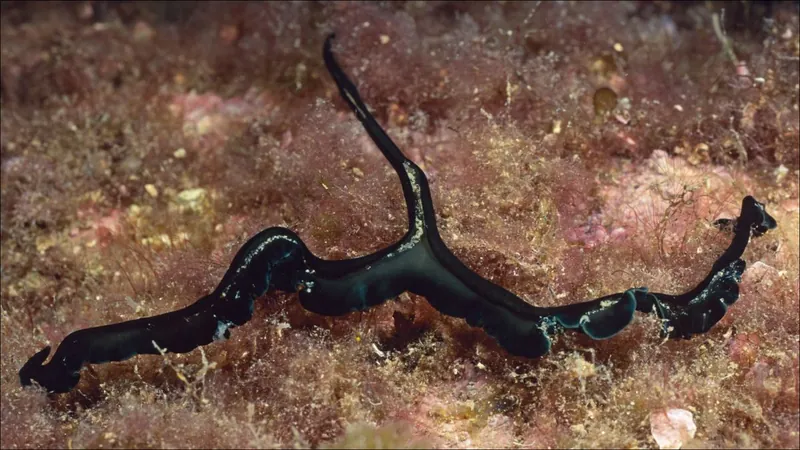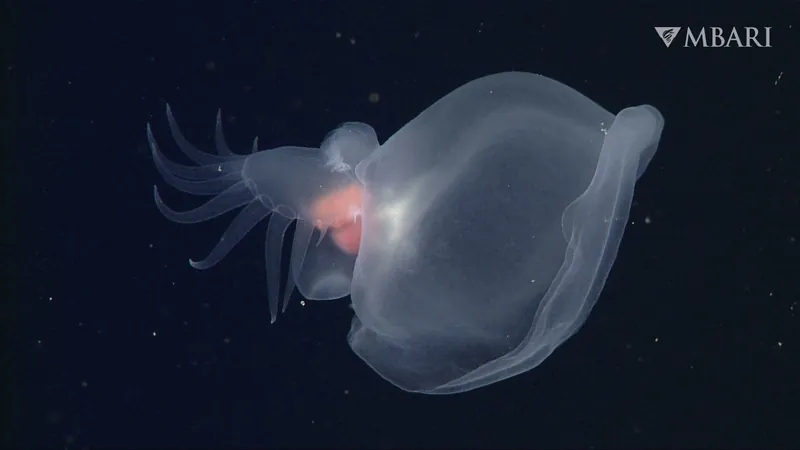
Meet the Green Spoonworm: The Tentacle Monsters That Transform Males into ‘Living Testicles’!
2024-11-23
Author: Olivia
Appetite for the Environment
Green spoonworms have an intriguing diet that primarily consists of organic matter filtered from the water, as well as small invertebrates. They possess a unique, spoon-shaped proboscis, which acts like a long sucking mouthpart capable of catching floating food. As Trond Roger Oskars, a marine invertebrate researcher at Møre Research Institute, aptly describes, “They basically look like a tentacle monster from a sci-fi film.”
These captivating creatures stay anchored within thick, sausage-shaped bodies buried in the seafloor, often utilizing burrows made by other animals. Their proboscis extends gracefully into the water, sifting through the detritus of the ocean floor—think of them as nature’s vacuum cleaners, feasting on algae, decomposed materials, and even waste.
Size Matters: Females vs. Males
While the average green spoonworm measures around 6 to 7 inches (15 to 18 centimeters) in length, their lengthy proboscis can stretch up to 10 times their body size! This incredible adaptation allows them to maximize their foraging potential.
Bright green in color, these females boast a toxic pigment called bonellin, which serves as a warning signal to predators. However, there’s an astonishing twist in their reproductive system. The gender of the spoonworm is determined not by genetics, but by environmental chemistry.
Upon settling in the seafloor, a larva develops into a female. Conversely, if a larva lands directly on a female, it undergoes a transformation influenced by the bonellin, instantly turning into a microscopic male. This male is absorbed into the female’s body, effectively becoming a living parasite dedicated solely to fertilizing her eggs—a biological phenomenon that reduces him to "a living testicle."
A Double-Edged Sword: Bonellin's Powers
These unique spoonworms don’t just thrive in peculiar reproductive strategies; their green pigment, bonellin, serves multiple purposes. Not only does it provide protection against predators, but it also possesses antibacterial properties. Scientists have already begun to target bonellin as a potential new antibiotic, hinting at a range of potential applications in medicine.
This striking example of oceanic life emphasizes the importance of investigating the diverse and often bizarre creatures residing in our oceans. Currently, we have only identified about 10% of oceanic species, leaving countless undiscovered organisms that may hold invaluable secrets for future research and benefits.
The Bottom Line
The green spoonworm challenges our understanding of gender, biology, and survival in the depths of the ocean. As scientists continue to unravel the mysteries of these tentacle monsters, who knows what other bizarre and beneficial creatures still lie hidden beneath the waves? Dive in and discover the wonders of our blue planet—there’s much more than meets the eye!









 Brasil (PT)
Brasil (PT)
 Canada (EN)
Canada (EN)
 Chile (ES)
Chile (ES)
 España (ES)
España (ES)
 France (FR)
France (FR)
 Hong Kong (EN)
Hong Kong (EN)
 Italia (IT)
Italia (IT)
 日本 (JA)
日本 (JA)
 Magyarország (HU)
Magyarország (HU)
 Norge (NO)
Norge (NO)
 Polska (PL)
Polska (PL)
 Schweiz (DE)
Schweiz (DE)
 Singapore (EN)
Singapore (EN)
 Sverige (SV)
Sverige (SV)
 Suomi (FI)
Suomi (FI)
 Türkiye (TR)
Türkiye (TR)